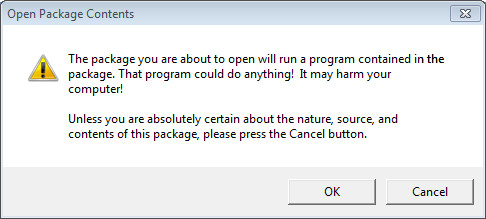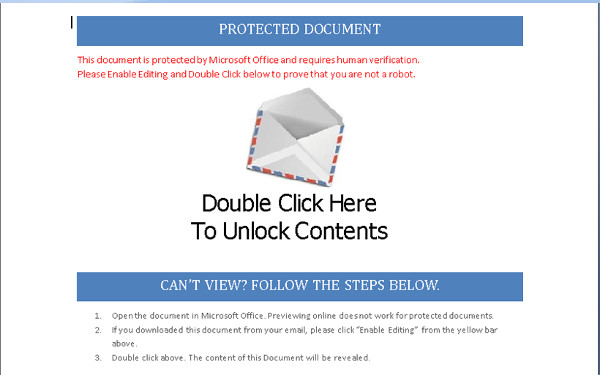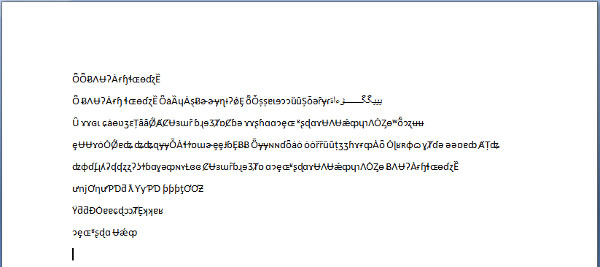TROJ_ARTIEF.JEJOVD
Trojan.Mdropper(Norton);Mal/DocLnk-C(Sophos)
Windows


Threat Type: Trojan
Destructiveness: No
Encrypted: Yes
In the wild: Yes
OVERVIEW
Dropped by other malware, Downloaded from the Internet
This Trojan arrives on a system as a file dropped by other malware or as a file downloaded unknowingly by users when visiting malicious sites.
However, as of this writing, the said sites are inaccessible.
TECHNICAL DETAILS
4,034,086 bytes
RTF
Yes
14 Jun 2017
Connects to URLs/IPs, Downloads files, Displays graphics/image
Arrival Details
This Trojan arrives on a system as a file dropped by other malware or as a file downloaded unknowingly by users when visiting malicious sites.
Installation
This Trojan drops the following files:
- %User Profile%\{Random values}.txt
- %User Profile%\{Random GUID}\{Random values}.txt
(Note: %User Profile% is the current user's profile folder, which is usually C:\Documents and Settings\{user name} on Windows 2000, XP, and Server 2003, or C:\Users\{user name} on Windows Vista and 7.)
It creates the following folders:
- %User Profile%\{Random GUID}
(Note: %User Profile% is the current user's profile folder, which is usually C:\Documents and Settings\{user name} on Windows 2000, XP, and Server 2003, or C:\Users\{user name} on Windows Vista and 7.)
Autostart Technique
The scheduled task executes the malware every:
- Minute
Download Routine
This Trojan accesses the following websites to download files:
- http://{BLOCKED}.{BLOCKED}.197.34:443/cd
- http://{BLOCKED}.{BLOCKED}.197.34:80/cd
- http://{BLOCKED}.{BLOCKED}.197.34:8080/cd
- http://{BLOCKED}.{BLOCKED}.253.126:443/cd
- http://{BLOCKED}.{BLOCKED}.253.126:80/cd
- http://{BLOCKED}.{BLOCKED}.253.126:8080/cd
Other Details
This Trojan does the following:
- Execute the following commands to create a scheduled task:
- schtasks.exe /create /tn "AdobeFlashSync" /tr "wscript.exe //B /e:jscript \Users\{User name}\{Random GUID}\{Random values}.txt" /sc minute /mo 25
- schtasks.exe /Create /f /tn "{Random GUID}" /tr "wscript.exe //B /e:jscript \Users\{User name}\{Random Values}.txt" /sc ONCE /st {Current time}
- Uses jscripts to initialize itself
- Utilizes powershell to do dnsqueries
- Display the following prompt upon opening the document:

- Deletes initialization files
It performs DNS requests to the following sites:
- aaa.stage.12019683.ns2.true0deals.com
However, as of this writing, the said sites are inaccessible.
NOTES:
The following image is the content of the document:

The following shows the image of the document after execution:

SOLUTION
9.850
13.470.09
14 Jun 2017
13.471.00
15 Jun 2017
Step 1
Before doing any scans, Windows XP, Windows Vista, and Windows 7 users must disable System Restore to allow full scanning of their computers.
Step 2
Note that not all files, folders, and registry keys and entries are installed on your computer during this malware's/spyware's/grayware's execution. This may be due to incomplete installation or other operating system conditions. If you do not find the same files/folders/registry information, please proceed to the next step.
Step 3
Restart in Safe Mode
Step 4
Delete the Scheduled Tasks added by this malware/grayware
To delete the added Scheduled Task file:
For Windows 2000, Windows XP, and Windows Server 2003:
- Open the Windows Scheduled Tasks. To do this, click Start>Programs>Accessories>System Tools>Scheduled Tasks.
- Double-click on a .JOB file.
- Check if the malware path and file name exists in the .JOB file. To do this, check the value in the Run field.
- If found, select the .JOB file then press SHIFT+DELETE to permanently delete the file.
- Repeat the steps above for the remaining .JOB files.
For Windows Vista, Windows 7, Windows Server 2008, Windows 8, Windows 8.1, and Windows Server 2012:
- Open the Windows Task Scheduler. To do this:
• On Windows Vista, Windows 7, and Windows Server 2008, click Start, type taskschd.msc in the Search input field, then press Enter.
• On Windows 8, Windows 8.1, and Windows Server 2012, right-click on the lower left corner of the screen, click Run, type taskschd.msc, then press Enter. - In the left panel of the Task Scheduler Window, click Task Scheduler Library.
- In the upper-middle panel, click a Task.
- In the lower middle panel, click the Actions tab
- Check if the malware path and file name exists in the task. To do this, check the value in the Details column under the Actions tab.
- If found, select the task and press DELETE and click Yes to delete the task.
- Repeat the steps above for the remaining tasks.
Step 5
Search and delete these folders
- %User Profile%\{Random GUID}
Step 6
Search and delete this file
- %User Profile%\{Random values}.txt
Step 7
Restart in normal mode and scan your computer with your Trend Micro product for files detected as TROJ_ARTIEF.JEJOVD. If the detected files have already been cleaned, deleted, or quarantined by your Trend Micro product, no further step is required. You may opt to simply delete the quarantined files. Please check this Knowledge Base page for more information.
Did this description help? Tell us how we did.

